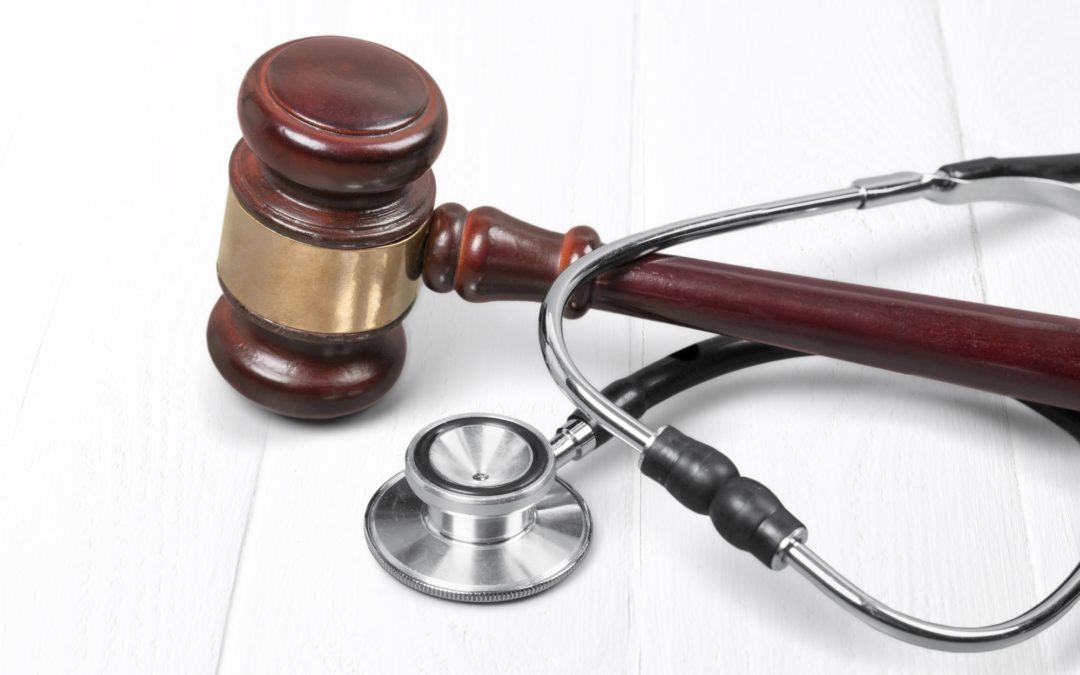
by admin | Mar 15, 2019 | Blog |
Most medical professionals strive to do the best work they can every day. However, not even medical professionals are free from scrutiny. Patients rely on doctors and other medical professionals to treat mild to severe conditions. Although cases of medical malpractice aren’t the most common, they do happen. What could lead someone to file a medical malpractice lawsuit against a doctor or other medical professional? Continue reading to find out more about when you can and should sue for medical malpractice. Medication Errors Medication errors can occur in several different ways. To start, your doctor may prescribe the wrong medication for your condition. This can cause serious harm to a patient. Sometimes a certain medication will be given to the wrong patient in a hospital. More often, though, there will be an error in dosage. The doctor may mistakenly write the wrong dosage on the prescription. This may then lead the nurse to administer the wrong dosage. Sometimes a piece of medical equipment will malfunction and cause the patient to intake a larger dose of medication. Incorrect Diagnosis If the doctor fails to diagnose a condition, this could lead to serious long-term consequences. The doctor may leave a serious condition untreated, causing the patient to miss a vital treatment window. These cases account for the largest portion of medical malpractice lawsuits. Some cases even result in death. Cases of misdiagnosis can be difficult to prove. A misdiagnosis can happen to even the most experienced and skilled doctors. Usually, the doctor’s competence will be compared to a similar medical professional. Childbirth Injuries Childbirth is one of the greatest experiences any of us can ever...

by admin | Aug 10, 2018 | Blog, Medical Malpractice |
When people think of medical malpractice, they think of the age-old tales of surgeons leaving tools inside a patient after surgery. However, that isn’t a common form of malpractice these days due to procedures put in place to prevent it. Understanding the medical malpractice definition and how to file a medical lawsuit is a good place to start. Common Forms of Malpractice The most common form of medical malpractice comes from medication. A medication error can come from a number of issues, including incorrect drug labeling, incorrect dosage, wrong medication time period, wrong medication, not monitoring drug side effects, and not prescribing medication. If any of the above happened due to the negligence of a doctor, then it is a medication error. Any harm that comes from it can be considered medical malpractice. In these cases, it becomes about proving that the doctor did not act in the standard duty of care that other doctors would have abided by. Medication Errors However, medication errors in terms of medical malpractice can be difficult cases at times. If you were prescribed the wrong medication or medication not technically for your illness but had experimental effects on your illness, then these cases can be straight-forward. However, if there was incorrect or confusing labeling, then the case becomes a bit difficult where the doctor can defend themselves or shift blame to the pharmacy. Yet, if you suffered horrible side effects or your illness became worse due to a medication error, you shouldn’t just deal with it. It is medical malpractice and you are owed compensation for any side effects or worsening condition that you suffered. Medical Malpractice Lawsuit...

by Charlie Smith | Jun 14, 2018 | Blog |
Hurricanes are deadly forces of nature that can cause massive damage when they strike. As you prepare for the next hurricane season, it’s important to know what you need to do to avoid injury when a hurricane or tropical storm strikes. Read on for important hurricane safety tips to help protect your property and your family. Remove Potential Flying Projectiles Even a Category 1 hurricane has winds that range between 74 and 95 mph, which can cause any loose objects around your home to become dangerous flying projectiles. Before the hurricane hits, walk around your property to find and put away anything that can become a flying object. This includes patio furniture, trash cans, and gardening tools. It’s also a good idea to trim back any dead or weak tree branches to prevent them from breaking off and becoming projectiles during the storm. Stock Up on Emergency Supplies If you’ll be riding out the storm in your home, you must make sure your emergency supply kit is fully stocked. You’ll want enough nonperishable food and bottled water for everyone in your house, a battery-powered radio, flashlights, extra batteries, and a first-aid kit. It’s a good idea to put together your emergency supply kit at the start of hurricane season. If a storm is heading your way, stores might start running low on supplies as people try to stock up at the last minute. Know Your Evacuation Route It’s important to make sure you know your evacuation route. As the storm approaches, pay attention to local weather reports, make a plan for where you’ll go if you have to evacuate,...

by Charlie Smith | May 24, 2018 | Blog, Medical Malpractice |
When you’re undergoing surgery, an anesthesiologist will provide sedation or general anesthesia to ensure that you don’t feel the pain of the procedure. However, anesthesiologists are human beings, so they can make mistakes just like anyone else. Hospitals and clinics around the country implement protocols to protect patients, but mistakes can still happen. Frightening Statistics Close to 40 million procedures involving anesthesia are performed every year in the United States. According to a study performed at Johns Hopkins, more than a quarter of a million people die each year due to medical errors, making this the third-leading cause of death in the nation. While not all of these deaths are directly related to errors made by anesthesiologists, some of them are, so it’s certainly cause for concern. Dosing Errors One of the most common mistakes made in the process of administering anesthesia is an error in the dosing. Medications must be dosed carefully based on the age, height, and weight of the patient, along with other critical factors. Errors in dosing are often made by anesthesiologists who don’t have a lot of experience, as well as those who are using different types of equipment or devices than they are used to using. Carelessness, haste, and inattention account for over 5 percent of the dosing errors made, according to the National Center for Biotechnology Information. Mistakes in Documentation When it comes to medicine, documentation is critical to ensure proper quality of care and transfer between the various staff members who might attend to a patient. Before, during, and after a surgery, a patient may interact with a number of medical professionals, so...

by Charlie Smith | May 18, 2018 | Blog, Slip and Fall, Workplace Injury |
Construction site accidents are all too common, but they can have serious consequences. Not only can accidents impact the physical and emotional health of the workers, but these mishaps can also delay projects and make it difficult to get crews onsite to handle the critical tasks. By following a few tips, you can reduce the chances of having major incidents and keep your construction site safe. Concerning Statistics It’s no secret that construction sites are some of the most dangerous places to work. In fact, out of nearly 4,700 worker fatalities in 2016, 21.1 percent were in the construction industry, according to statistics from the federal Occupational Safety and Health Administration (OSHA). The highest risks include falls, being struck by objects, electrocutions, and being caught in or between walls or other objects. OSHA Training One of the best ways to protect your construction site is to require every worker who will be on the site at any point to attend an OSHA training session. OSHA provides detailed training manuals and resources designed to help construction companies create their own training for their workers. It’s important to follow their guidelines and topics to ensure that every worker on the site receives training that applies to their job. Some of these topics include fall prevention, hazard communication standards, general requirements in scaffolding, respiratory protection, and ladders. Maintain Proper Signage On a construction site, it’s impossible to communicate updates to every worker when people are coming and going at all hours of the day. You could have the concrete team starting their pours early in the morning, while some crews could come in later...







